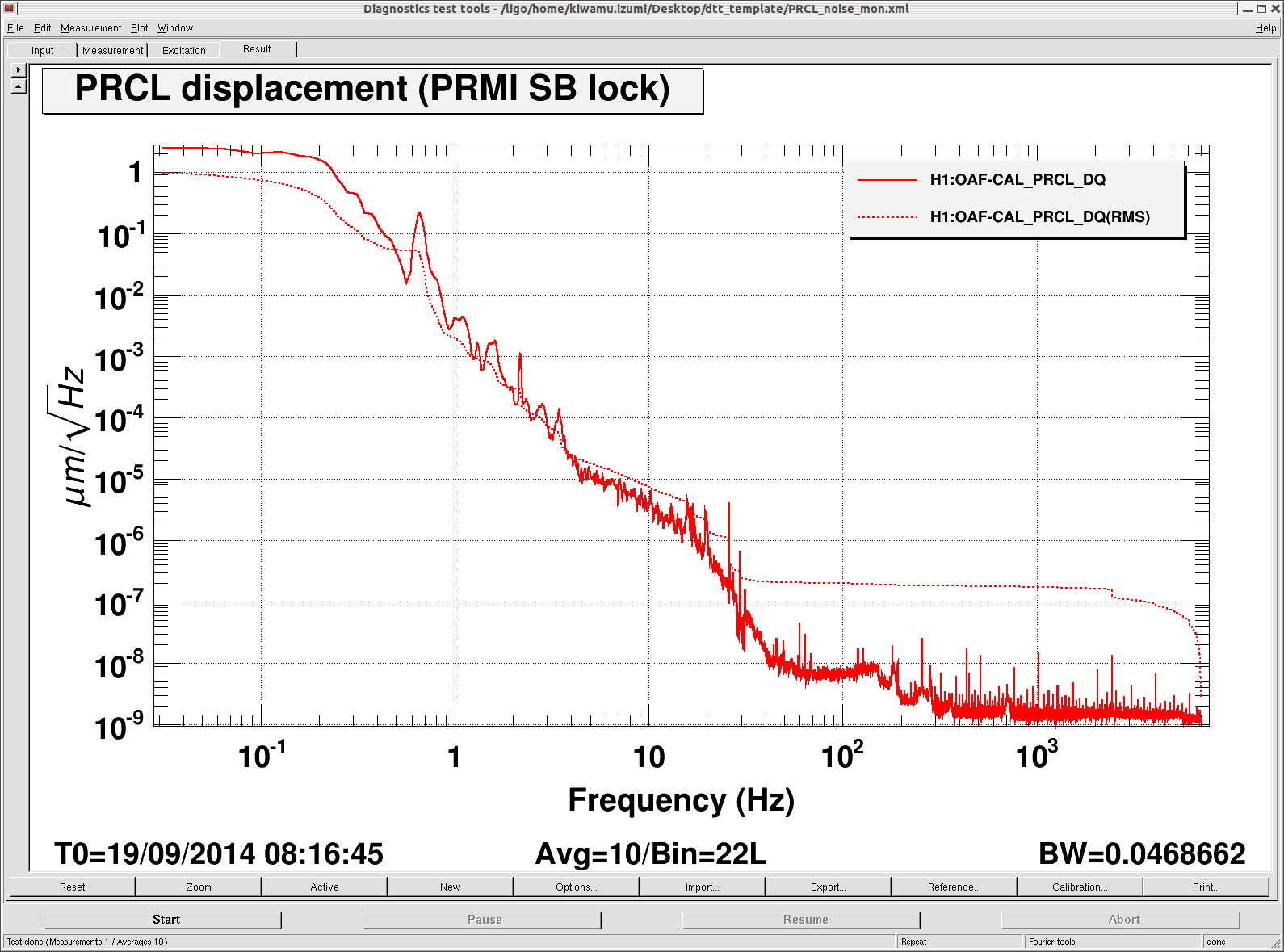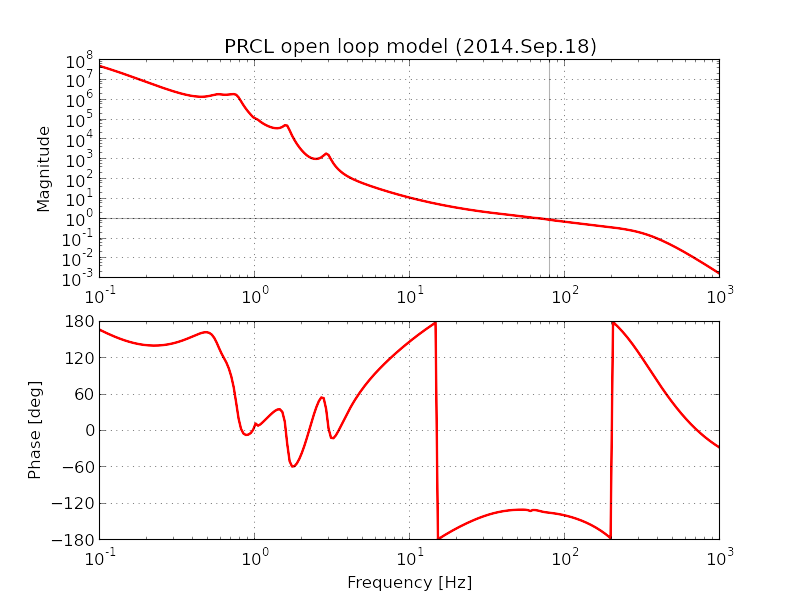Kiwamu, Sheila, Rana
We started by locking PRMI and taking a long spectrum of the BS op Levs, it seems that Alexa's new length 2 yaw filter (alog 14022) has reduced the yaw at around 0.05 Hz by a factor of about 2 compared to alog 13997. The first screenshot attached is a spectrum of the BS oplev with PRMI locked.
We then moved on the DRMI locking. After debugging the guardian a little bit, we were able to catch lock infrequently. Out first lock ended at Sept 19 4:55:19 UTC, and was about 10 minutes long. It locked again at 5:05:36 UTC, at 5:24 UTC we left everything alone to get a clean stretch of data until 5:42:40 UTC. At 5:33 UTC there were a few mode hopping glitches. In general the mode hopping events are not as frequenct tonight as last night, and they are reduced when we have better alignments. The attached video is from a DRMI lock.
We measured the loop gains. We found that with the gain settings used last night (alog 1402 ) gave us a prcl ugf of 130 Hz, and a MICH ugf well below 10 Hz. We now are using a PRCL gain of 6.4 (to get a UGF around 80 Hz) and a MICH gain of -50 (ugf of 10 Hz). Measurements attached.
Kiwamu also noticed that SR3 pitch motion at 0.8 Hz was large, kiwamu implemented a SR3 oplev damping loop with an upper UGF a few Hz and a lower ugf of 0.3Hz is, copied from the PR3 oplev damping servo.
PRMI is now locked.
Here's I'm plotting some signals from a long PRMI lock to look at the low frequency content.
In the first plot you see the spectra. The RMS of the UL coil is ~30k cts (DAC range is 131k cts peak).
The second plot shows the time series. The peak signals are a little over 100k. In the old configuration, the PRM was kept from saturating by driving the upper stages at DC and also by splitting the drive to PR2. By increasing the drive range of the M3 drivers by 10x, we've made it possible to lock the PRC with a single actuator (which is simple). After locking we can now smooth on the M2 driver and reduce the M3 votlage below 1 Hz by ~20-30x. (done by hand, needs to be added into the guard).
The third plot shows the BS optical lever signals in and out of lock. You can see that the noise from 10-100 mHz is dominated by the MICH control signal and its consequent cross-coupling through the imbalance of the BS suspension. After the nice work by the Seismic Gang over this past week, the yaw is no longer a problem and we should be able to reduce the remaining pitch motion in the BS OL by tuning the L2P filtration later this morning.
9/19 update: corrupted BSOL.pdf file replaced with real one
I started preparing the online calibration stuff in h1oaf. Tonight I got the PRCL loop calibrated assuming the UGF is set at 80 Hz.
According to my model, the readout gain of the PRCL loop (which is REFL_A_RF9_I) when the DRMI is locked was estimated to be 3x1012 cnts/m. So I put the inverse of this number (which is 3.3 x 10-7 um/cnts) into the calibration filter to get the error signal converted into um.
Here is the open-loop equilvalent (a.k.a. unsuppressed- ) PRCL noise, calibrated in um/sqrtHz, but in the PRMI locking state ( and therefore the sensing gain maybe slightly different from that of the DRMI, which can result in inaccurate noise floor at high frequencies.)
The model open loop transfer function looks like this:
Note that FM2, 3, 4, 9 and 10 of the LSC PRCL loop are assumed to be engaged. Also FM1, 3, 4, 6 and 10 of PRM PR2 are assumed to be engaged. There is no digital filters in the PRM M3 stage. PR2 is not included in the model as is in reality.
Based on the sus models and the lateset digital filter settings, I confirmed that the cross over frequency of the PRM M2 and M3 stages in the model is at 4.5-ish Hz which agrees with Sheila's adjustment (alog 14019). The model takes the latest factor-of-10 increase in the coil driver strength of the PRM M3 stage into account.










